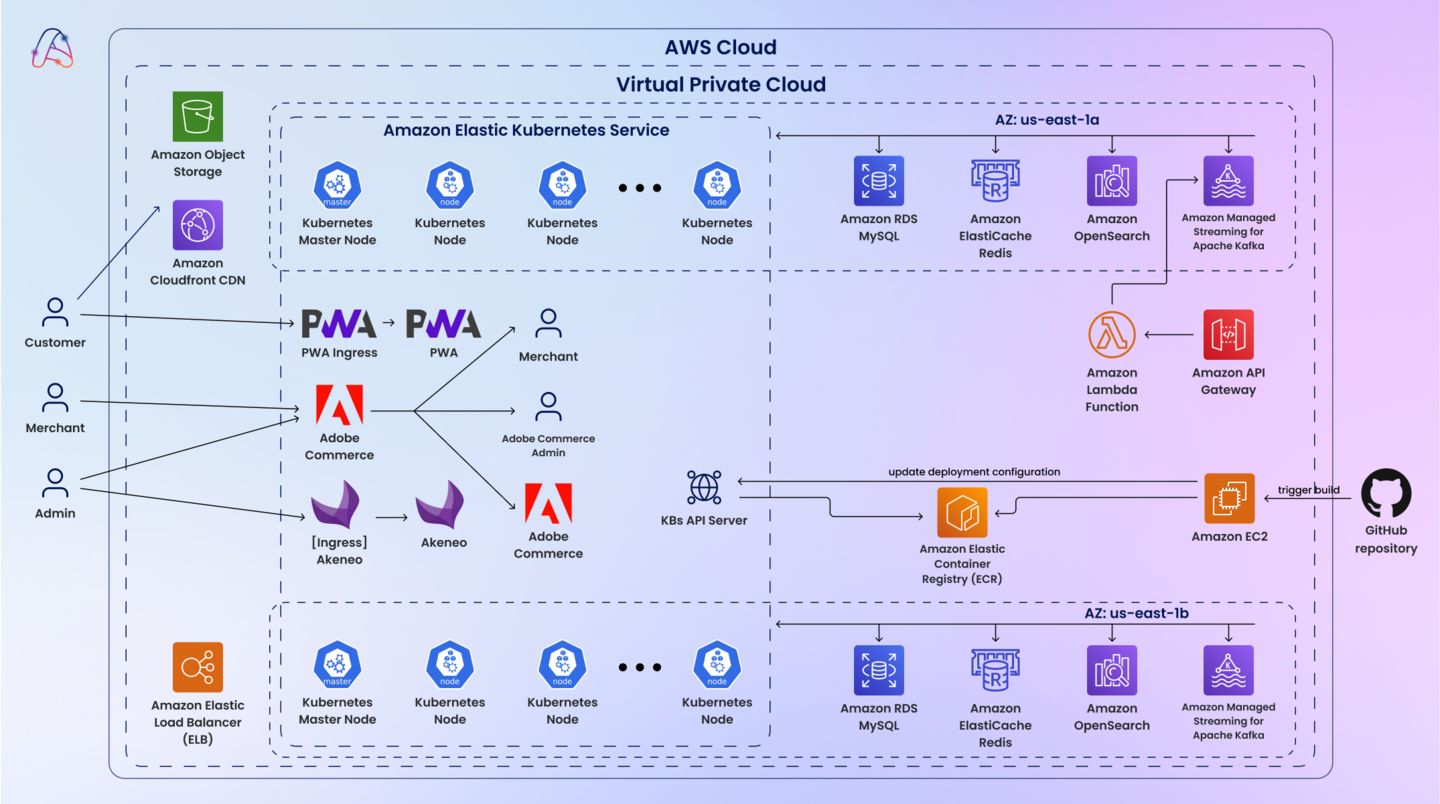eCommerce Strategy & MVP of Multivendor Marketplace Software
Designing a full-blown tech roadmap to build a B2C eCommerce marketplace MVP
PROJECT IN BRIEF
Client

A massive resort and recreation provider catering to 8M+ clients a year
Industry
eCommerce
Entertainment
Services
Research and development
Software architecture prototyping
Platforms


Without proper tech roadmapping, a Minimum Viable Product becomes a Non Viable Product, prone to being further butchered in bad engineering hands. Add to this multiple vendors and stakeholders aching to have a say in the project, and you’re finished.
Or not? Indeed, the client had too much on their plate. That’s why they were after a trusted architecture design pro advanced in the eCommerce vertical, able to factor in all the dos and don’ts while devising a multipage marketplace. And here’s what it took us…
PROJECT BACKGROUND
Performance and functionality limitations
Targeting families as their major audience, the client was particularly concerned about leading the business niche by building specialized multivendor marketplace software. The chances to achieve the goal were all the more consistent given the lack of robust competitor solutions within their service geography.
From a technical standpoint, it was critical for the client to build the
solution on an open-source platform. They first considered Adobe Commerce
powered by Webkul marketplace extensions, but found it inconsistent with their
objectives, and shifted gears towards composing a custom tech stack.
CLIENT’S OBJECTIVES
- Taking regional eCommerce leadership within the children’s goods and services category
- Engage over 1M platform users daily
- Growing the client outreach and revenue
CHALLENGES
Data-intensive storefront
- Display hundreds of thousands of products, from the client’s to suppliers’ to partners’ assortment, alongside introducing their businesses
- Ensure users can intuitively surf through a wide range of categories and descriptions
- Enable suppliers to easily add their goods to the website and track sales reports
- Channel order and purchase data to CRM system
- Implement end-to-end analytics and real-time reporting
VENDOR COMPETITION WIN
The client was in search of a skilled eCommerce software developer and advisor capable of ideating a large-scale solution architecture from scratch. Impressed with our team’s grasp of field specifics and the ability to quickly outline an intuitive product vision, the team brought Amitech Group into the fold within the project.
SOLUTION
Marketplace software architecture prototype
The team delivered a full-blown roadmap for the client to build multivendor marketplace software that smoothly brings together the client’s physical and digital facilities. The prototyped multipage website is meant to ensure curated product selection, an intuitive purchasing journey, and easy content management.
Running on Adobe Commerce, the monolith platform also has a headless mode to access a scalable server API (GraphQL) for several clients, including PWA (progressive web app) and mobile app. Adobe Commerce provides a built-in functionality to manage orders, users, products, and stores, with Page Builder enabling dynamic page generation and management.
Blueprint development
Solution architecture
- CMS: Adobe Commerce (Enterprise Edition)
- Adobe Commerce plugins: Marketplace Module and PWA Studio (Progressive Web Applications)
- Akeneo PIM
- Retail CRM
- Product delivery service
- End-to-end analytics service
- Payment system integration plugin
- Internet acquiring
Network management components & services
- Virtual Private Cloud
- Availability Zones
Tech infrastructure
Internal services
- PWA, the client app
- Adobe Commerce Web Node Cluster with Commerce API
- Adobe Commerce Admin Application
- Merchant Application
- Akeneo Product Information Management
- CRM Integration service
Third-party services
- Integrated Management Log
- MindBox
- RetailCRM
- Netsuite
- SmartyStreets

Open-source multivendor marketplace architecture
TECH UNDER THE HOOD


The major database for Adobe Commerce and Akeneo PIM


An in-memory database for caching used by Adobe Commerce to store user sessions and request caching data


A cluster management system used by Adobe Commerce and Akeneo PIM to index catalogs and handle search requests


Cluster generation and management service enabling message queuing and integration with IML
“The introduced databases can be replicated within one or several availability zones to handle the growing load.”

File storage and distribution services


Hosts free-form media files and static content


Integrates with AWS S3 and delivers files to users
IMPROVING SCALABILITY
Given the risks of peak loads during seasonal sales or Black Fridays, the team vetted various scalability approaches. Specifically, Amitech Group suggested Kubernetes-powered autoscaling to process the growing user traffic without employing and maintaining multiple servers.
Adobe Commerce nodes scaling
Due to the Adobe platform and PHP programming language specifics, the Adobe Commerce nodes require increased processing time intensity and extra CPU while taking little working memory. To adapt the solution to these needs, the team came up with the horizontal scaling strategy.
Once the load and CPU resource expenditure skyrocket over 70%, the client’s cloud platform uses the Horizontal Pod Autoscaler to automatically provide the required servers where Kubernetes cluster nodes roll out.
MySQL database cluster scaling
Amitech Group employed the Master/Slave data replication mechanism for the clusters to have a dedicated Master node for recording and reading, and multiple slave nodes, exclusively for reading. The approach recommended within the Adobe tech documentation states that the reading should prevail over the recording.
To boost the system performance, we’ve suggested opting for the Adobe Commerce EE split database solution meant to distribute the load from a single database cluster to three independent clusters based on their functions:
- The Main Database contains the major Adobe Commerce data, such as product catalog and user records
- The Checkout Database hosts user shopping cart data
- The Sales Database comprises the order details
FAULT TOLERANCE AND SYSTEM MONITORING
Distributing Kubernetes clusters across several availability zones is a way to ensure system fault tolerance. In case there’s an error within any of the app containers, Kubernetes resets it automatically while redirecting the app traffic to other available containers.
The platform enables configuring notifications to alert the client in case an anomaly indicator occurs. Besides, it allows getting notified of critical server errors that require close examination by the engineering team.
To track the container viability, Kubernetes utilizes the liveness probe mechanism, thus sending an HTTP request within an adjustable time frame to collect system monitoring data, such as:
- CPU and core memory usage within Kubernetes virtual machines
- The number of requests the app processed
- The number of requests the app failed to process due to server errors
- Database cluster indicators
- Reset frequency within Kubernetes cluster nodes
- Overall system performance
Security
- GDPR-compliant encryption of payment and client data
- Website and server protection from DDoS and other external cyber attacks
- Website fault tolerance and process continuity
- Load distribution across different servers and cloud platforms
System updates release
The infrastructure and Kubernetes configuration are to be updated via Terraform. By employing Infrastructure as a Code, the tool allows describing it with declarative code. This way, the platform stores its cloud and Kubernetes infrastructure as text files, readily available for versioning within the Git repository.
FEATURE HIGHLIGHTS
- End-to-end analytics
- Built-in accounting module
- Integrated product delivery service
- Advanced product and vendor filtering
- Multiple payment services support
- Custom user authentication logic
- Cross-selling/upselling functionality
- Marketing and CRM automation
- Customer service support
WORK DONE
- CMS system fine-tuning
- Multipage marketplace architecture design
- Communication strategy across the CMS and the stats collection system
- End-to-end marketplace analytics enablement
- CMS to CRM data exchange planning
- Roadmapping CMS integration to product delivery service
- Payment service integration scheme
- Vetting the CRM data reporting to the accounting system
- Outlining seamless post-launch MVP functioning and hosting support
Results
100%
Covering the client’s tech requirements
3X
Reducing the client’s time and effort for the ideation and planning phase
30%
Cutting engineering costs due to the pre-designed architecture
2
weeks
Nailing full-cycle R&D and MVP prototyping

Funding win
With the well-planned prototype, the client easily won extra investor budget

Monolith + Headless
The platform combines the two architecture strategies with an eye to future growth

Autoscaling
The system is designed to be resilient enough to withstand unexpected load peaks

Multivendor marketplace
The B2C marketplace software is for multichannel eCommerce with 100+ vendors

Marketing automation
With orchestrated CRM, CMS, and analytics, sales and marketing work like a dream
THE UNDERLYING MASTERY INGREDIENTS
Engagement model
Time and Material NTE
Methodology
Scrum
Team composition
- Software Architect
- Product Owner
- 2 Software Developers
Platforms
Adobe Commerce, Akeneo PIM
Programming languages
PHP
Frameworks and tools
Apache Kafka, Elasticsearch, Kubernetes, MySQL, Nginx, Redis, Terraform
Last updated: July 16, 2024
ABOUT THE AUTHORS

Steers the Amitech Group boat through the rising tide, onboarding eCommerce talents and catching every wave to drive breezy innovation and lift fellow vessels.

Democratizes those royally sophisticated tech phenomena by means of concise copy and occasional wit.

Drives the team’s technical excellence like there are no barriers. Gears the race with real game-changing finds.
Let’s build something great together!
Drop us a line and we will contact you to shape our path forward